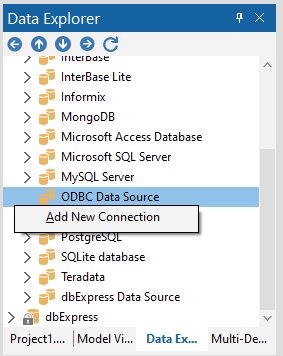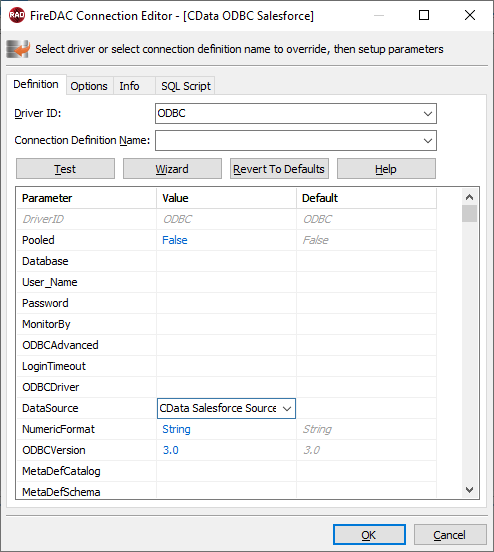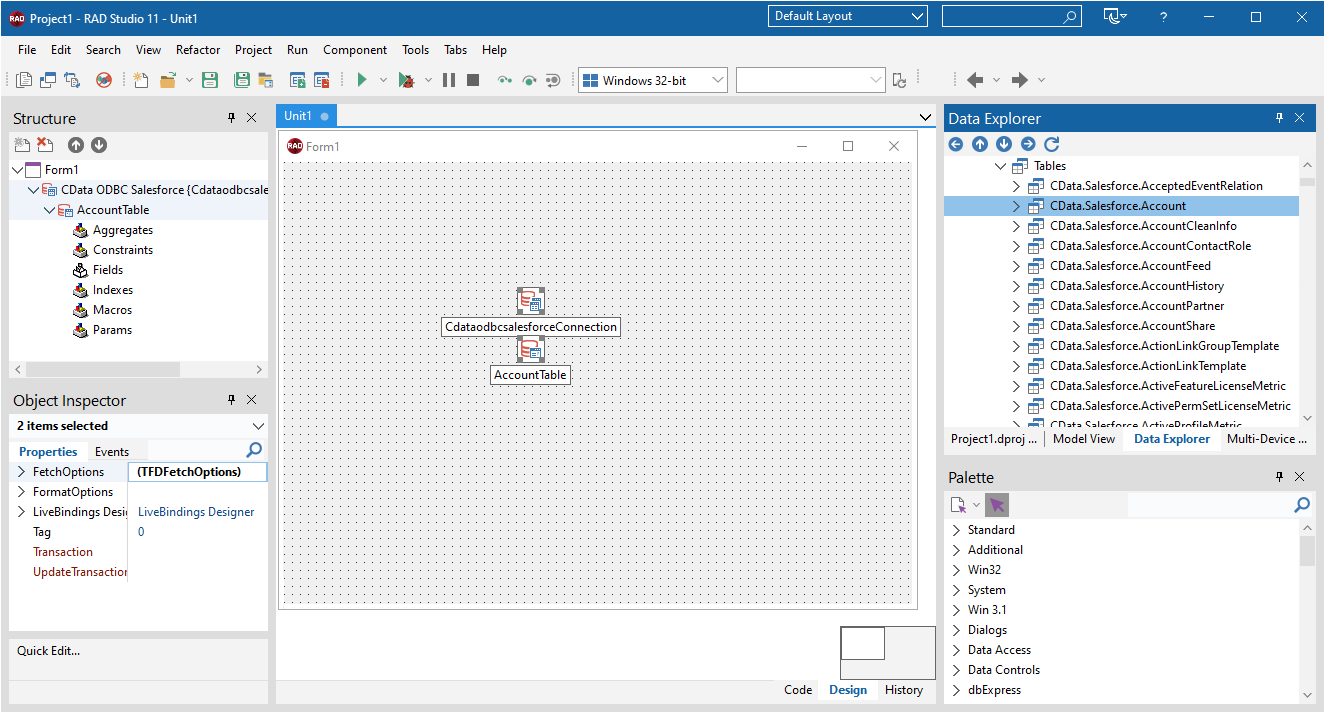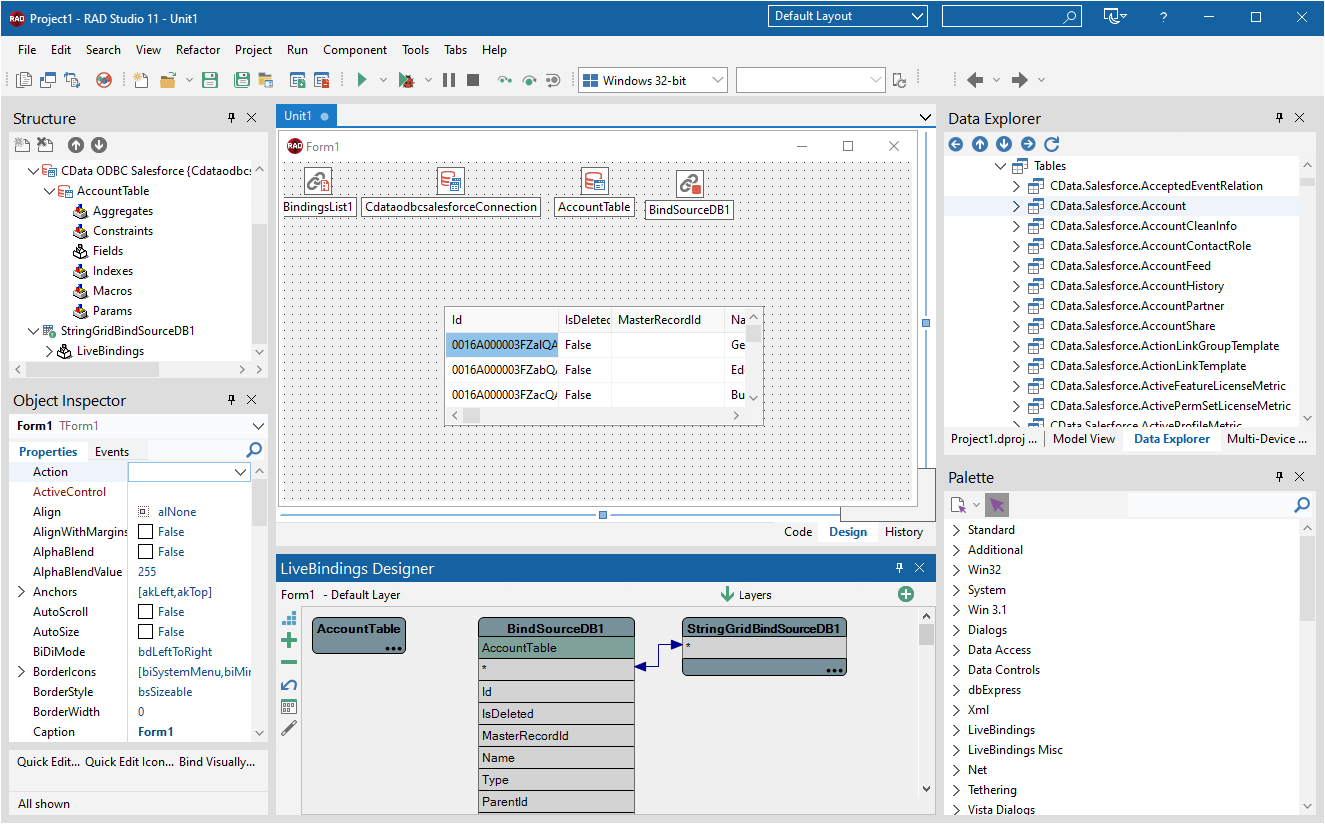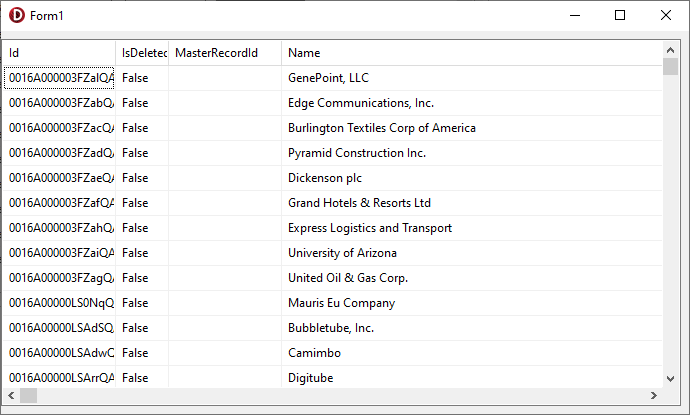Model Context Protocol (MCP) finally gives AI models a way to access the business data needed to make them really useful at work. CData MCP Servers have the depth and performance to make sure AI has access to all of the answers.
Try them now for free →Viewing Azure Data Lake Storage Data in RAD Studio Data Explorer
How to view Azure Data Lake Storage data in RAD Studio Data Explorer using the CData ODBC Driver for Azure Data Lake Storage.
Embarcadero RAD Studio provides a development environment for Delphi and C++Builder applications. With the CData ODBC Driver for Azure Data Lake Storage, you gain access to live Azure Data Lake Storage data within RAD Studio, abstracting the data into tables, views, and stored procedures that can be used to both retrieve Azure Data Lake Storage data. This article will walk through connecting to Azure Data Lake Storage using the Data Explorer.
Configure a Connection to Azure Data Lake Storage
If you have not already, first specify connection properties in an ODBC DSN (data source name). This is the last step of the driver installation. You can use the Microsoft ODBC Data Source Administrator to create and configure ODBC DSNs.
Authenticating to a Gen 1 DataLakeStore Account
Gen 1 uses OAuth 2.0 in Azure AD for authentication.
For this, an Active Directory web application is required. You can create one as follows:
To authenticate against a Gen 1 DataLakeStore account, the following properties are required:
- Schema: Set this to ADLSGen1.
- Account: Set this to the name of the account.
- OAuthClientId: Set this to the application Id of the app you created.
- OAuthClientSecret: Set this to the key generated for the app you created.
- TenantId: Set this to the tenant Id. See the property for more information on how to acquire this.
- Directory: Set this to the path which will be used to store the replicated file. If not specified, the root directory will be used.
Authenticating to a Gen 2 DataLakeStore Account
To authenticate against a Gen 2 DataLakeStore account, the following properties are required:
- Schema: Set this to ADLSGen2.
- Account: Set this to the name of the account.
- FileSystem: Set this to the file system which will be used for this account.
- AccessKey: Set this to the access key which will be used to authenticate the calls to the API. See the property for more information on how to acquire this.
- Directory: Set this to the path which will be used to store the replicated file. If not specified, the root directory will be used.
Connecting to Azure Data Lake Storage Data Using Data Explorer
You can create a simple application for displaying Azure Data Lake Storage data by utilizing the CData FireDAC Components for Azure Data Lake Storage and a new VCL Forms Application:
- Open the Data Explorer in RAD Studio and expand FireDAC.
- Right-click the ODBC Data Source node in the Data Explorer.
- Click Add New Connection.
![Adding a New Connection. (Salesforce is shown.)]()
- Enter a name for the connection.
- In the FireDAC Connection Editor that appears, set the DataSource property to the name of the ODBC DSN for Azure Data Lake Storage.
![Setting the Connection Parameters. (Salesforce is shown.)]()
- Back in the Data Explorer, expand the views for the connection.
Create a new VCL Forms application and drag a view (for example: Resources) onto the form.
![Placing the View on the Form. (Salesforce is shown.)]()
- Select the ResourcesView object on the form and set the Active property to true.
Right-click on the object, bind visually, and link everything (*) to a new control (TStringGrid).
![Visually Binding the View. (Salesforce is shown.)]()
Arrange the TStringGrid on the form and run the application to see the Resources data.
![The View data on a Form. (Salesforce is shown.)]()
Related Articles
Below you can find other articles for using the CData ODBC Driver with RAD Studio, Delphi, and C++ Builder.

